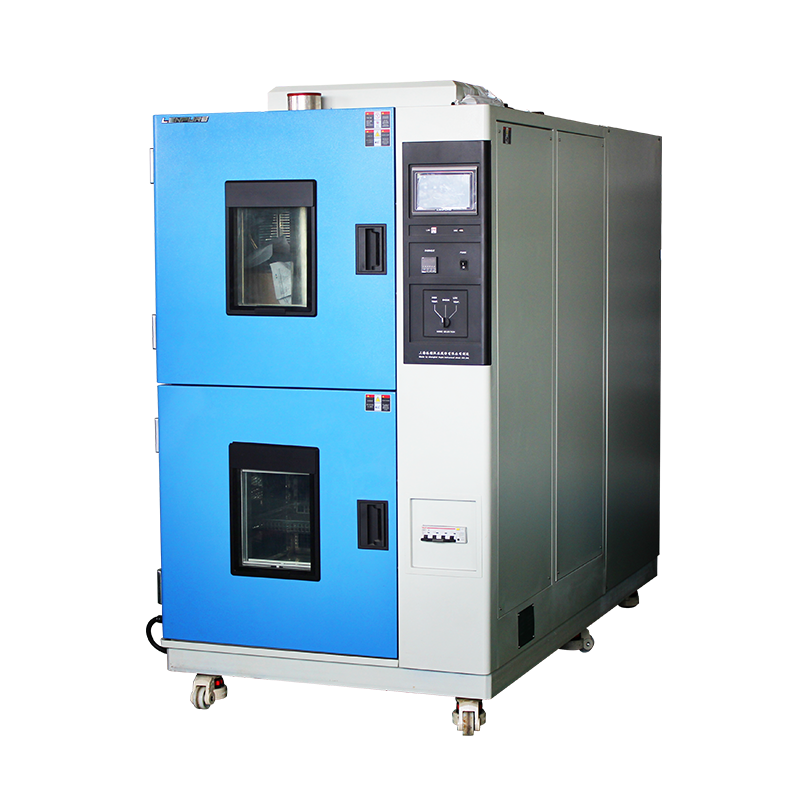

Thermal shock test chambers are essential tools for verifying a product’s ability to withstand extreme temperature changes. However, in practical applications, neglecting operational details can lead to inaccurate test results, sample damage, and even equipment failure. Here are five common yet often overlooked operational pitfalls and strategies to address them:
Pitfall 1: Starting the Test Without Adequate Preheating/Precooling
Problem: Eager to start the test program without waiting for the chamber temperature to fully stabilize.
Consequences:
The actual temperature change rate does not match the set value, failing to meet standard requirements (e.g., IEC 60068);
Samples may be damaged due to sudden temperature changes beyond their expected tolerance range.

Correct Operation:
Allow sufficient time (usually over 30 minutes) for the high-temperature and low-temperature zones to stabilize before starting the test;
Use the equipment’s self-inspection function or an independent sensor to verify the uniformity of the temperature inside the chamber.
Pitfall 2: Improper Sample Placement and Density
Problem: Randomly stacking samples or placing them too close to the chamber walls, ignoring the air circulation path.
Consequences:
Uneven temperature distribution on the sample surface, leading to local overheating or overcooling and distorted test results;
High-density placement may block sensors, affecting temperature control accuracy.
Correct Operation:
Maintain at least a 10cm gap between samples and a 15cm distance from the chamber walls;
Adjust the tray layout according to the sample volume to ensure unobstructed airflow.
Pitfall 3: Ignoring the Matching of Temperature Change Rate with Sample Characteristics
Problem: Blindly pursuing rapid temperature changes without considering the material’s heat capacity and structural characteristics.
Consequences:
Low heat capacity materials such as plastic parts and PCB boards may develop internal stress cracks due to rapid temperature changes;
Battery products may pose safety hazards due to thermal shock.
Correct Operation:
Refer to standards (e.g., GB/T 2423.22) to select stepwise temperature changes or set a reasonable rate;
Conduct preliminary small-scale tests to verify the temperature change tolerance limits for complex components.
Pitfall 4: Neglecting the Control and Recording of Recovery Time
Problem: Focusing only on the high-to-low temperature transitions and ignoring the recovery time of samples in ambient conditions.
Consequences:
Material properties are not stable when tested (e.g., coating adhesion tests), reducing data reliability;
Electronic components may suffer insulation failure due to residual condensation.
Correct Operation:
Ensure samples are allowed to recover in ambient conditions for at least 2 hours after testing;
Add drying steps for high humidity-sensitive samples.
Pitfall 5: Long-term Neglect of Equipment Maintenance and Calibration
Problem: Focusing solely on test functionality while ignoring the monitoring of the equipment’s own condition.
Consequences:
Refrigerant leakage causes the low-temperature zone to fail to meet standards;
Heater carbon buildup or sensor drift leads to temperature control deviations.
Correct Operation:
Inspect the sealing strips and condenser cleanliness monthly, and calibrate temperature sensors quarterly;
Keep a log of equipment operation and regularly replace wear-prone parts (such as filters and lubricating oil).